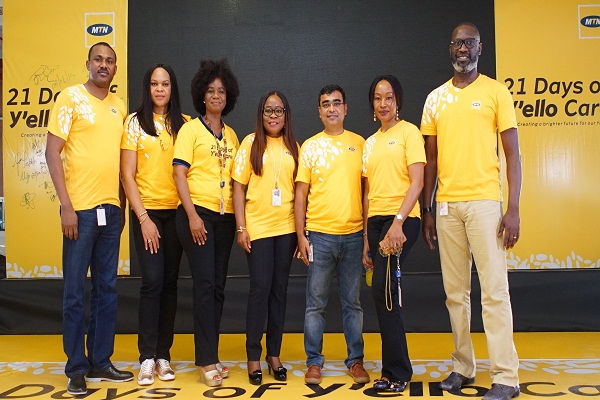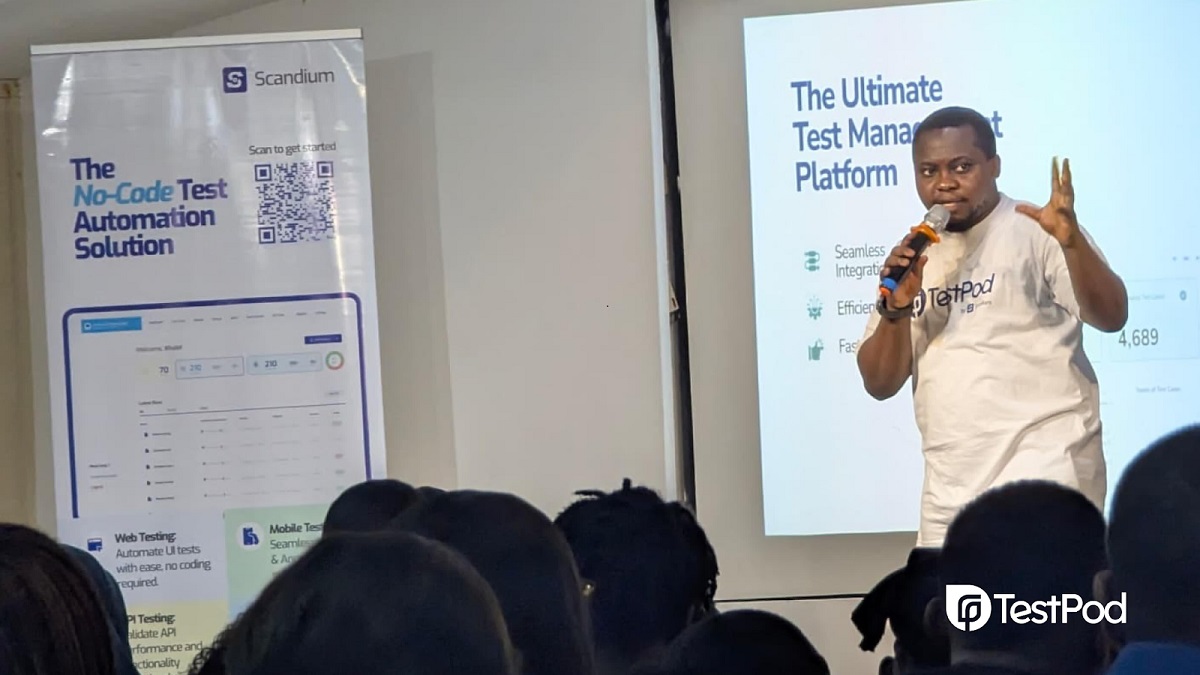Telecom
Adopting GEO’S HTS Digital Payloads into SSFFs for Low Latency LEOs to Drive 5G Expectations

By Andrew Aroh
Major satellite manufacturers are now set to create a new NGSO [Non-Geosynchronous] satellite constellation for low latency broadband services using HIGH DATA RATE [HDR] V- band.

Their rational for building and operating a LEO constellation stems from the frequently cited implacable rise in connectivity needs around the world requiring low latency.
Between rising commercial demand and government driven universal broadband service obligations, the companies expects satellite could play a major role.
It really comes down to the insatiable demand for bandwidth that we see in the marketplace. The amount of bits being required by all of us is growing on the order of 20-something percent a year, and in order to meet that demand there are certain areas where satellite has advantages over terrestrial approaches.
Customers lack choice in the broadband provider options especially in remote and rural areas, meaning there is room for more satellite broadband players to compete, providing ubiquity.
On the technology side, the manufacturer would want to taking its digital play load technology for its GEO system and putting into a small satellite form factor [SSFF].
This is because there is a definite advantage in applying them to the V-band NGSO system. The digital payloads are scalable and can be sized up or down as needed. Typically a sixth generation digital payload for HTS [High throughput satellite] can be equipped with the seventh generation that has twice the capacity of generation six.
The new trend is to shorten development cycles of satellite and make sure the next generation capabilities are brought up quickly and not have these long developments cycles that have been in the past.
The process involves continuous miniaturization in order to fit more transistors on integrated circuits [ICs] or essentially bringing Moore’s law to bear in space. This could dovetail well with the manufacturer’s LEO ambitions, as satellites in this orbit typically have shorter life spans and therefore requires less radiation hardening compared to 15years geostationary satellites.
On the spectrum front, the constellation could downlink information in the 37.5 to 40.0 GHz band on a shared access basis with the proposed upper microwave flexible use [UMFU] service, adopting exclusion zones or out-of-band emission limits. In the filing, the uplink spectrum, for fixed satellite services [FSS] could be in the 50.4 to 51.4 GHz and 51.4 to52.4 GHz bands.
The uplink spectrum will help create a five [5] Gigahertz block of uplink spectrum, paired with FSS downlink spectrum in the 37.5 to 42.5 GHz band, enabling very high-data-rate [HDR] V-band satellite broadband services in the near future.
Recall that a rejoinder to WRC-19 has shown that seven system characteristics are vital for essential communications operations of NGNs for 5G: Coverage, Capacity, Protection, Security, Access [user plane] & Control [control plane], Interoperability, Flexibility/Scalability, and Quality-of-Service [QoS].
33GPP release 14 looked into satellite deployment scenarios.
3GPP release 15 defined the architecture and supports the deployment of application functions, as required for MEC [Mobile or Multi-Access Edge Computing].
3GPP Release 16 leads a study to identify use cases for provision of services with satellite integrated into the 5G system.
These specifications will also trickle down to satellite, including the search for lower latency solutions with many use-cases involving applications deployed at the edge of the network.
5G will lead to a huge shift towards a landscape dominated by wireless connectivity.
However, 5G is accompanied with deployment of architectures: Fiber [+] Terrestrial Wireless [+] satellite, leveraging network function virtualization [NFV] and software defined networking [SDN] both at the core and edge of the Network. Management of the NFV infrastructure will be performed through a Management and Orchestration. [MANO] Framework: This architecture allows easy integration of multiple applications.
A virtual evolved packet core [vEPC] application would extend local call switching possibility.
MEC Platform could host different applications like caching and multicast which can help reduce latency and improve quality-of-experience [QoE] for the user.
5G is a technology that will push the boundaries of throughput and capacity further beyond that of 4G to enable newer types of applications and services in the domains of: Health, Transport [Land, Air, and Sea], Entertainment, M2M, Security, etc. They will provide increased computing power, scalability, reduced operating costs and business models to enable differentiation. 5G will enable instantaneous connectivity to billions of devices, the internet of things [IoT] and a truly connected world-smart city, homes and schools, etc.
In general, testing campaign confirms that LEO provides superior fiber-like performance for high-end satellite services.
The ability to demonstrate fiber-like performance via satellite across a number of applications that perform poorly on GEO satellite backhaul is a testament to the capabilities of LEO network for 5G.
With its high-throughput links, ultra-low latency, and disruptive economics, LEO constellations offer an unparallel value proposition to expand the reach of 4G and 5G networks:
Testing scenarios included:
- High definition video streaming without interruption
- Video conference with teams demonstrating consistent flexibility of movement and voice transmission with user experience matching terrestrial and cellular connections
- Remote desktop connection to seamlessly manage a remote computer
- VPN connection without any delay or outages
- FTP encrypted file transfers of 2GB in both directions
- IPSec tuned encryption with no reduction in the performance of the link.
As satellite professionals plan, design and build offerings to provide best-in-class connectivity for 5G customers, we are eager to explore how cutting-edge technologies like new LEO constellations can integrate with global connectivity infrastructure across every application to deliver an outstanding performance with significant improvement over what we can achieve via GEO satellites today.
However, to get super-high, multi-gigabit speeds, carriers are turning to newer, much higher frequencies known as millimeter wave [mmW]: 3.0-0.3mm
So what do we expect? :
5G networks need to be much smarter than previous systems, as they are juggling many smaller cells than can change size and shape.
5G will be able to boost capacity by four times over current systems by leveraging wider bandwidths and advanced antenna technologies. [Multibeam with MIMO]
The goal is to have far higher speeds available and far higher capacity per sector, at far lower latency than 4G.
The standards bodies involved are aiming at 20Gbps speeds and 1ms latency, at which point very interesting things begin to happen.
5G home internet shows one major advantage over 4G: Huge Capacity.
Carriers can’t offer competitively priced 4G home internet because there just isn’t enough capacity on 4G cell sites for the 200GB of monthly usage most homes now expect.
5G could really increase home internet competition where 50 percent of Nigerians only have one option for 20Mbps or higher home internet service.
In the USA, a carrier, like Verizon says its 5G service will be truly unlimited.
5G home internet is also much easier for carriers to roll out than house-to-house fiber optic lines. Rather than digging up every street, carriers just have to install fiber optics to a Cell Site Or Access Point every few blocks, and then give consumers wireless modems. Most carriers now know that 5G wireless will give it much broader coverage than its fiber optic FiOS service.
Hence, satellite’s LEO constellations will offer carriers the required direct-to-home [DTH] internet service with the high bandwidth, low latency, or low-power-low cost aspects of 5G.
The small cells aspect of 5G [Both for cellular and satellite networks – since both technology uses cells with the antennas] may also help with in-building coverage, as it encourages every home router to become a cell site or access point.
Dedicated in-building and home systems that connect mobile users and wireless devices to the main core network are required for one-hop direct-to-home [DTH] internet Access/connectivity via satellite.
The core network is the mobile exchange and data network that manages all of the mobile voice, data and internet connections.
For 5G, the core network has been redesigned to better integrate with the internet and cloud based services and also includes distributed servers across the network improving response time [reducing latency].
It is the core network that manages many of the advanced features of 5G, including network function virtualization and network slicing for different applications and services.
With LEO Broadband constellations, Smart Beam Forming for Direct LEO Satellite Access of Future IoT will increase SATCOM offerings.
Andrew Aroh is President SSPI Nigeria
Telecom
MTN Plans Second Public Offer in Nigeria

Ralph Mupita, president,MTN Group, has announced plans to reduce its shareholding in MTN Nigeria through a public offer after it returns to profitability.

The group aims to cut its stake from 76 percent to 65 percent in line with its longstanding commitment to deepen local ownership, according to ITWeb, South African tech publication.
Mupita, who disclosed the plan during an editors’ roundtable meeting this week, said “The only localisation we have as MTN Group is we have potentially a sell-down in Nigeria at some point in time, approximately 11 percent. This is something we have said long ago, that over time, we would want more Nigerians owning the company, and we are prepared to sell down to 65 percent. We are at around 76 percent,” he said.
The anticipated offer would mark MTN’s second major retail public offering in Nigeria, following its 2021 sale of 575 million MTN Nigeria shares to local investors.
That offer was oversubscribed, resulting in the allocation of 661.25 million shares, including a 15 percent greenshoe option. This reduced MTN’s stake in its Nigerian unit to 75.6 percent from 78.8 percent.
More than 126,000 investors participated in that round, including retail and institutional investors such as Nigerian pension funds, representing approximately 6.5 million contributors.
At the time in 2022, MTN Group announced plans to further reduce its stake to approximately 65 percent from 75.6 percent.
Mupita confirmed that the Group would only proceed with a new offer once MTN Nigeria resolves its negative equity position and resumes dividend payments.
Currently, MTN Nigeria’s shares are trading at N235 per share.
Despite reporting a revenue of N3.36 trillion in 2024, a 36.03 percent bump from N2.47 trillion in 2023, it posted a loss after tax of N400.44 billion, a 192.25 percent rise from N137.02 billion in 2023.,
This negative performance was driven by macroeconomic headwinds, including record inflation and a steep devaluation of the naira, which raised operating costs and wiped out investor value.
MTN Nigeria has fallen behind MTN South Africa as MTN Group’s largest revenue contributor.
However, the Group is projecting a rebound in 2025, citing key drivers such as recent tariff adjustments, operational restructuring, and improving macroeconomic indicators in Nigeria.
Speaking at the roundtable, Mupita highlighted that the Group is anticipating a V-shaped recovery in Nigeria’s service revenue. He pointed to the recent structural reforms, such as the removal of fuel subsidies, the naira stabilisation, and improved dollar availability.
“The continued normalisation of these factors, particularly naira stability, should have positive impacts on consumer spending power and our business operations,” Mupita noted in the Group’s financial statement for 2024 recently.
Telecom
MTN Staff Commission New Set of Classrooms at Iwerekun Community High School

In a remarkable demonstration of corporate volunteerism, MTN staff, through the Y’ello Care initiative, have renovated a school block at Iwerekun Community Senior High School, Lakowe. This effort has restored hope and significantly improved learning conditions for both students and teachers.

The project, led by dedicated MTN employees, is part of the annual Y’ello Care campaign, which focuses on empowering communities through education, digital inclusion, and economic support.
Prior to the renovation, students at Iwerekun Community Senior High School faced challenges, including deteriorating classrooms that hindered effective learning. Recognising the need for intervention, MTN staff stepped in to transform the learning space, creating a safe, conducive, and inspiring environment for both students and teachers.
At the commissioning ceremony, Honourable Jamiu Tolani Alli-Balogun, Commissioner of the Lagos State Ministry of Basic and Secondary Education, acknowledged the significance of MTN’s contribution to education: “The education sector worldwide thrives on collaboration and commitment between public and private partners. MTN’s generous contribution is truly recognised, and I express my deepest gratitude for its unwavering commitment to supporting education in Lagos State. This new facility will provide a conducive environment for teaching and learning, enabling our students to reach their full potential.”
Representing the Ojomu of Lakowe, Prince Mukaila Adeola expressed the community’s gratitude: “This is a rare opportunity, and it is not every day that Lakowe benefits from such support. We truly appreciate MTN for this contribution, and we look forward to even more support in the future.”
The renovated school block is equipped with improved water supply and an inverter included in a serene environment that enhances the learning experience. This renovation will ensure that students and teachers have a more comfortable and sustainable academic setting.
Speaking on the significance of the project, Tobe Okigbo, Chief Corporate Services and Sustainability Officer (CCSSO) at MTN Nigeria, emphasised the personal investment of MTN staff: “I want to emphasise that this commissioning was made possible by the dedicated staff of MTN. Although MTN has a Foundation funded by 1% of the company’s annual profits, the credit for this commissioning goes to the MTN Nigeria staff members who, through their personal contributions, made this happen.”
Beyond the fresh coat of paint and structural improvements, initiatives like this create a lasting impact and a sense of hope in the lives of the students. The addition of a reliable power source and water facility means that students no longer have to struggle with poor infrastructure, allowing them to focus on their education.
For many students, access to quality education remains a challenge—not just because of financial barriers but also due to poor infrastructure, lack of resources, and limited teacher support. Programmes like Y’ello Care, alongside other education-focused volunteer initiatives, are helping to fill these gaps by creating safe, well-equipped learning environments and equipping students with knowledge beyond the classroom.
With the successful completion of the Lakowe school project, MTN reaffirms its commitment to education and youth development. The company encourages more organisations to embrace volunteerism and community service, as collective action remains a powerful force for societal progress.
Telecom
Scandium Introduces TestPod to Revolutionize Software Testing Across Africa and Beyond

Today’s software ecosystem is moving fast, building quality digital products has never been more crucial and more complex. As teams accelerate release cycles using a blend of manual and automated testing, one persistent issue remains: test management is fragmented.

That’s the problem TestPod, a newly launched test management platform from the team behind Scandium, is built to solve.
TestPod officially launched on Friday, April 11, 2025, offering software teams (whether in Africa or anywhere else) a much-needed solution to centralize and track their testing processes across platforms and test types. Whether it’s manual, automated, exploratory, accessibility, performance, or regression testing, TestPod brings visibility, structure, and speed to fragmented QA workflows.
“We spoke to over 200 teams at different African startups and enterprises, and despite having some automation in place, at least 90% are still heavily reliant on manual testing, just like their global counterparts,” said AbdulAzeez Ogunjobi, CEO and Co-Founder of Scandium Systems.
He explains that while Scandium’s AI-powered no-code automation suite is already being used across web, mobile, and API products globally, TestPod addresses a more foundational gap: organizing and managing all forms of testing—not just automation.
“Furthering our mission to help teams build bug-free digital products, we’re launching TestPod to help them organize their software testing operations, regardless of what kind of testing they need to do,” he added.
The timing is critical. According to the World Quality Report 2024–25, 68% of organizations are exploring Generative AI in their QA workflows, but most still lack clarity on what tests are running, what’s failing, and how test coverage aligns with ongoing releases.
Meanwhile, Africa’s digital economy is booming. A recent McKinsey report estimates it could contribute over $712 billion to continental GDP by 2025. The continent now holds more than 1.1 billion registered mobile money accounts, and in 2023 alone, over $1 trillion in transactions were processed across Instant Payment Systems, according to AfricaNenda. Regulations are tightening. Quality, reliability, and user trust are becoming more central, as the continent churns out more tech solutions in expanding sectors.
Testing isn’t just about automation. It’s about knowing what’s working and what’s broken.” noted Sodeeq Elusoji, CTO and Co-Founder of Scandium. “The real bottleneck in testing isn’t always a lack of automation—it’s lack of visibility. You can’t improve what you can’t track, and that’s what TestPod delivers.”
Unlike traditional tools that prioritize rigid workflows, TestPod is lightweight, modern, and flexible, designed for agile teams who need to move fast. It supports test case authoring, tagging, execution tracking, and real-time dashboards.
“Testing has evolved, but the way teams manage tests hasn’t caught up. We’ve seen teams with advanced automation pipelines still tracking test outcomes in spreadsheets and Slack.” said Jafar Alabi, Vice President of Products and Business Development at Scandium.
While it integrates seamlessly with Scandium’s no-code test automation suite, TestPod is framework-agnostic, making it a perfect fit for teams using Selenium, Playwright, Cypress or other custom test stacks.
Backed by a proven team with success building Africa’s first no-code test automation platform, Scandium has already achieved 6-figure ARR and powers test automation across 120+ organizations in 15+ countries. With TestPod, they’re expanding that impact even further—from test execution to test orchestration.
TestPod is now available at testpod.io. Early access is open globally and free for teams of all sizes.
As Africa’s tech scene continues to accelerate—with fintech, health tech, and mobility leading the charge, TestPod is built to ensure these innovations are not just fast but flawless.

 E-Business2 days ago
E-Business2 days agoCyberattacks: ‘56 Percent of Cases Stem from Existing Logins

 News2 days ago
News2 days agoSenate Committee Partners with Kuda Bank to Tackle Compliance Crisis as Nigeria Loses ₦3.4 Trillion

 Broadcasting2 days ago
Broadcasting2 days agoSubscriber Withdraws Suit against MultiChoice, FCCPC over Price Hike

 Telecom2 days ago
Telecom2 days agoMTN Plans Second Public Offer in Nigeria

 E-Business2 days ago
E-Business2 days agoKaspersky Presents Insight on 14% Increase in Spyware Attacks on Businesses in Africa @ GITEX Africa

 E-Financial2 days ago
E-Financial2 days agoSterling Bank Reiterates Transfer Fees Removal

 General News2 days ago
General News2 days agoOpenAI Sues Elon Musk Claiming Bad-Faith Tactics

 General News2 days ago
General News2 days agoFG Unveils e-Visa, Digital Entry Cards to Strengthen Border Security
















